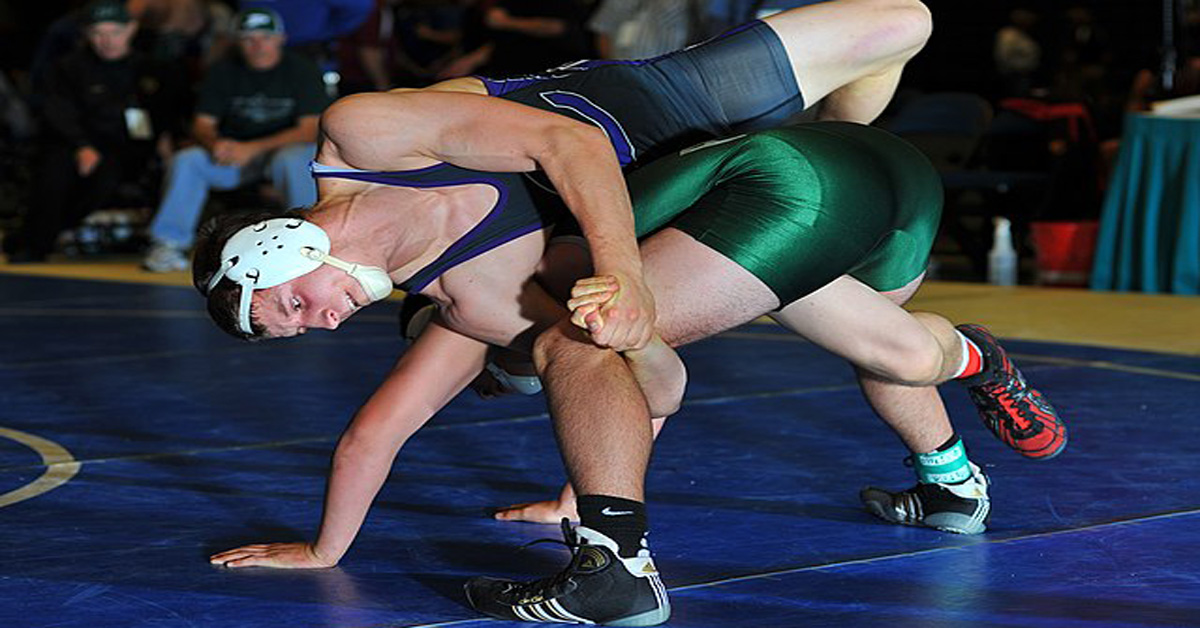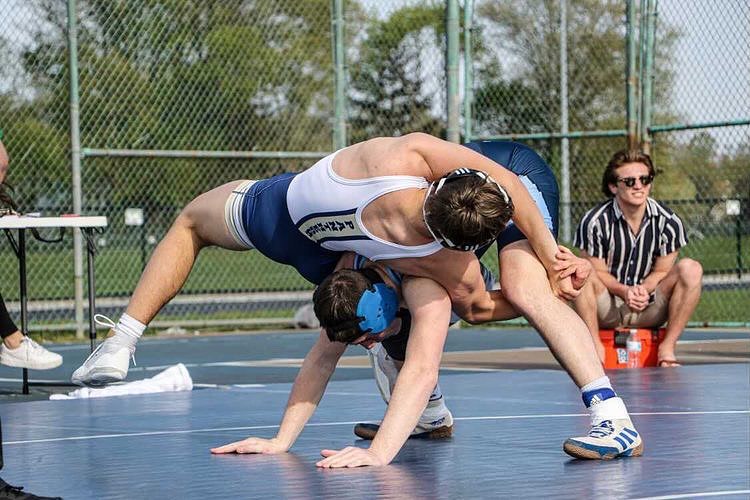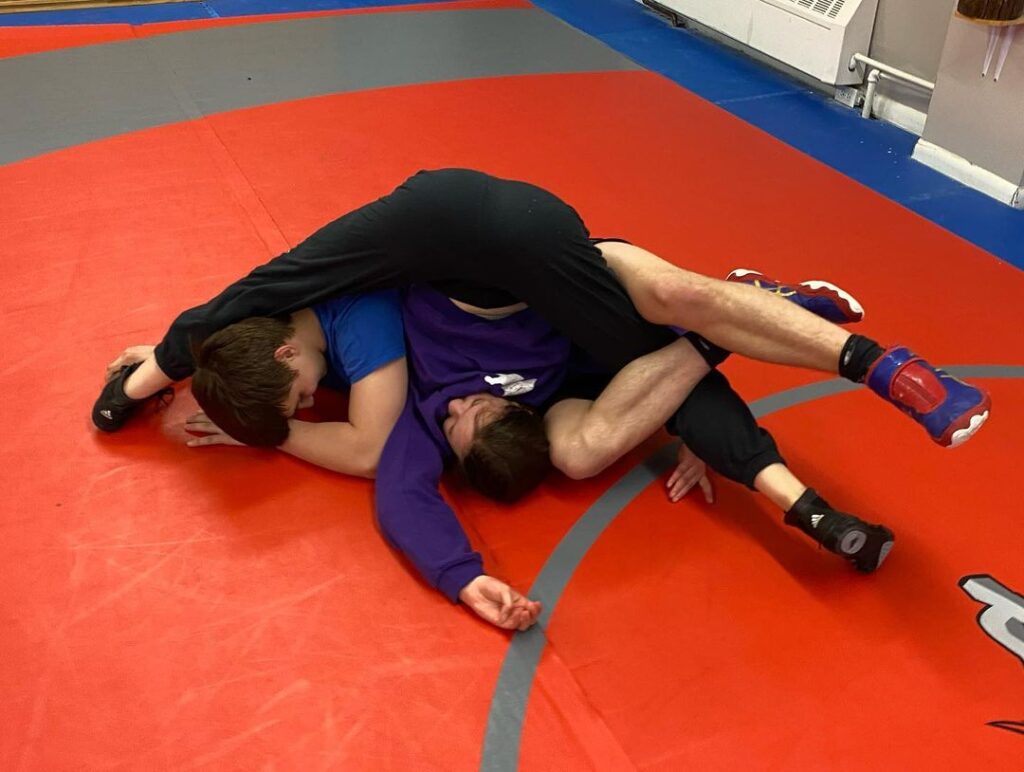Spladle Wrestling Move

In wrestling, there are various nasty pinning positions. One of the most unorthodox but effective pinning moves is the spladle.
Here is what you need to know about the spladle wrestling technique. Read below to see the entries for hitting this pin and tips for hitting it, and mistakes to watch out for.
What is the Spladle in Wrestling?
The spladle is an amateur wrestling move used to control and pin an opponent. This technique is used in amateur wrestling, including Greco-Roman, freestyle, and folkstyle.
It’s a relatively unorthodox wrestling technique but an effective one. The pin involves manipulating an opponent’s legs and upper body to control the opponent.
Many consider it a high-risk, high-reward move because you either get it or end up in a bad spot. However, wrestlers who are skilled at using the spladle are hard to deal with.
You have to watch out for the move or get the painful embarrassment of being spladled.

Can the Spladle be Used in MMA or BJJ?
The spladle wrestling technique has been passed on to every combat sport and multiple martial arts. Grappling martial arts, like BJJ and Sambo, use different variations of the move.
This technique can be used for everything from control to land strikes or hit a submission. If you’re a specialist in 10th Planet style submissions, the spladle would be a great addition to your toolbox.
How to do the Wrestling Spladle
There are different entries for hitting the spladle wrestling move. Here are some of the entries for the technique.
The Standing Spladle
The most common entry for this pinning technique is from standing when defending a single leg. When your opponent shoots in for a single leg, you have to act fast and defend.
Counter their single by using the switch, which is your hook, and grabbing your opponent’s leg. Along with the switch, you will grapevine your opponent’s far leg.
From here, you can roll forward or backward and end up in the same position. In this position, you have control of both your opponent’s legs trapped with your side compressing their neck.
You can worsen this pinning position by hooking your free leg behind your opponent’s ankle. Once you get here, you’re going to drive your stomach into your opponent’s head as you pull their legs back. Highly unorthodox but very effective when done right.
Spladle Off a Sprawl
A spladle can also be entered from sprawling in your opponent’s takedown attempt. When they attempt a takedown, sprawl on them and go into a cradle.
One hand is controlling your opponent’s head as your other arm hooks behind your opponent’s near leg. Connect your hand to establish control and put your opponent’ on their side.
From here, you can go into an easy entry for the pin. Your near leg steps between your opponent’s legs and hooks their near leg.
You then pull your opponent’s legs to their head and into the nasty pinning position.
The Switch and Cross Leg Spladle
The spladle pin can be hit just off the switch to counter your opponent’s takedown. When they attempt their takedown, hit the switch and put them on their side.
On their side, you’re going to keep your weight down and control your opponent’s top leg with both arms. To grapevine your opponent’s bottom leg, you can do one of two things.
If you are flexible, you can just move your better leg and hook your opponent’s leg. But if you aren’t very flexible, you can grab your opponent’s leg and pull it towards you before hooking it.
You might also find yourself in a scenario where your opponent blocks your spladle. When you try to hook their leg the normal way, they’re flexible enough to block it.
If this happens, you can go into what’s called a cross-leg spladle. All you do is take your top leg over instead and go into the pinning position.
Your opponent might block one, but they’ll eventually lose the position.
Tuck Under/Pass Over Into Spladle
The spladle can even be hit off a duck under when you’re fighting for position in a collar tie. Take an underhook on your opponent as you control their other arm. Shoot your underhook up to knock your opponent forward and hit the duck under.
When you duck under, grapevine your opponent’s near leg. At the same time, control your opponent’s body with a seatbelt body lock.
From here, let go over the body lock to hit the switch on your opponent’s far leg. To get into the pinning positon, just roll backward, and you’re there.

How to Defend the Spladle
The spladle is effective, but there are different methods to counter the technique. Here is how you can defend against the spladle.
Finish Your Takedown
A spladle pin is always set up off a counter. If you finish your takedown, you won’t have to worry about being stuck in this awful position.
Turn
Almost all of the spladle entries start with a counter switch or hooking your opponent’s leg. You can take away the switch entry by turning towards your opponent’s back. If they can’t hook your leg, they aren’t likely to complete the counter.
Pick Opponent’s Leg Up
When you go for a single leg, you can avoid getting spladled by lifting your opponent’s leg up. There’s no way they can hit the move on one leg.
Sit Out or Back Out
Instead of trying to force the technique and giving your opponent the entry, you can either sit out or back out. It might be the best option if your opponent is good at this move.
Put Opponent On Their Back
If you get stuck in the spladle, one of your last options would be to put your opponent on their back. You could possibly get a pin in a last-ditch effort, but it won’t work every time.
Tips For Using the Spladle Wrestling move
There are important details you must remember when using the spladle. Here are tips for hitting the technique.
- Hit The Switch: Most all of the splaldle entries start with hitting the switch.
- Pull Opponent’s Knee: When you grab your opponent’s leg with both hands, pull it towards their chest. This will improve your control over them.
- Grapevine: From standing, remember that you need to grapevine your opponent’s leg before going into the pin.
- Forward or Backward: From standing, you can roll forward or backward and end up in the same position.
- Don’t Keep Back Flat: Always keep your back and shoulders off the mat when in this position. A referee could decide to pin you if you make this error.
- Leg Control. When in this position, control your opponent’s top leg with two hands and both legs on the other.
- Keep Weight Forward: Keep your weight forwards or your opponent will roll on top and you might pin yourself.






